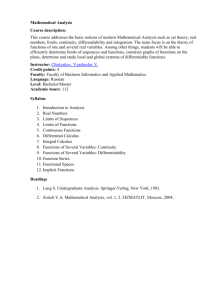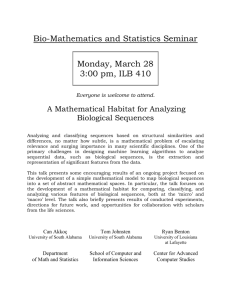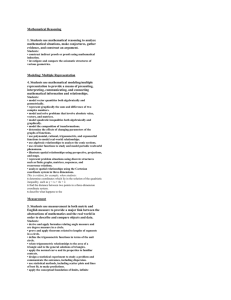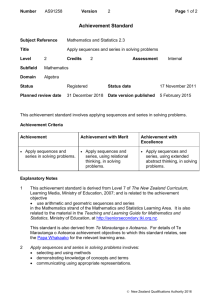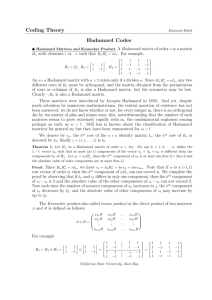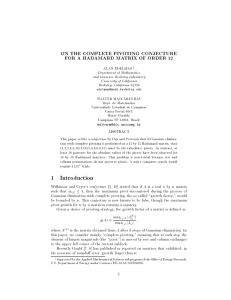0 Introduction
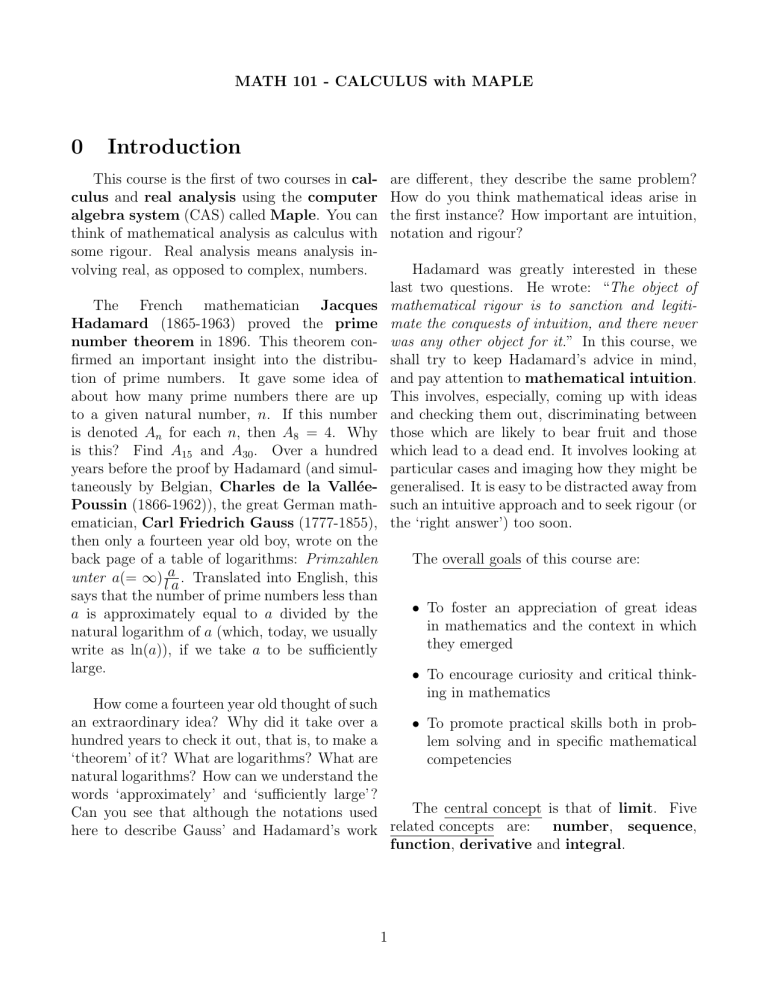
MATH 101 - CALCULUS with MAPLE
0 Introduction
This course is the first of two courses in calculus and real analysis using the computer algebra system (CAS) called Maple . You can think of mathematical analysis as calculus with some rigour. Real analysis means analysis involving real, as opposed to complex, numbers.
are different, they describe the same problem?
How do you think mathematical ideas arise in the first instance? How important are intuition, notation and rigour?
The French
Hadamard ematician, mathematician
(1865-1963) proved the number theorem is this?
Find A
15
Jacques prime in 1896. This theorem confirmed an important insight into the distribution of prime numbers.
and A
It gave some idea of about how many prime numbers there are up to a given natural number, n . If this number is denoted A n for each n , then A
8
= 4. Why
30
.
Over a hundred years before the proof by Hadamard (and simultaneously by Belgian, Charles de la Vall´
Poussin (1866-1962)), the great German math-
Carl Friedrich Gauss (1777-1855), then only a fourteen year old boy, wrote on the back page of a table of logarithms: Primzahlen unter a (= ∞ ) a l a
. Translated into English, this says that the number of prime numbers less than a is approximately equal to a divided by the natural logarithm of a (which, today, we usually write as ln( a )), if we take a to be sufficiently large.
Hadamard was greatly interested in these last two questions. He wrote: “ The object of mathematical rigour is to sanction and legitimate the conquests of intuition, and there never was any other object for it.
” In this course, we shall try to keep Hadamard’s advice in mind, and pay attention to mathematical intuition .
This involves, especially, coming up with ideas and checking them out, discriminating between those which are likely to bear fruit and those which lead to a dead end. It involves looking at particular cases and imaging how they might be generalised. It is easy to be distracted away from such an intuitive approach and to seek rigour (or the ‘right answer’) too soon.
The overall goals of this course are:
• To foster an appreciation of great ideas in mathematics and the context in which they emerged
• To encourage curiosity and critical thinking in mathematics
How come a fourteen year old thought of such an extraordinary idea? Why did it take over a hundred years to check it out, that is, to make a
‘theorem’ of it? What are logarithms? What are natural logarithms? How can we understand the words ‘approximately’ and ‘sufficiently large’ ?
Can you see that although the notations used here to describe Gauss’ and Hadamard’s work
• To promote practical skills both in problem solving and in specific mathematical competencies
The central concept is that of limit . Five related concepts are: number , sequence , function , derivative and integral .
1
0.1
The general aims of the course are:
• To bridge between the student’s experience of mathematics at school and the stated goals of this suite of courses
• To establish a foundation for each of the five concepts
• To introduce the student to the basic features of Maple
0.2
The specific objectives of the course are
that, by the end of the course, the student should be able to demonstrate:
1. An appreciation of the basic distinction between rational and real numbers
2. Familiarity with sequences defined both explicitly and by recurrence relations
3. Ability to explain informally the concepts of convergent and divergent sequences
4. Familiarity with polynomial, trigonometric, exponential and logarithmic functions
5. Ability to explain informally the concept of the limit of a function
6. Ability to explain informally the concept of continuity of functions
7. An understanding of the geometric and numerical interpretation of zeros of continuous functions
8. Ability to explain what is meant by the derivative of a function from several perspectives
9. Competence in the basic techniques of differentiation and integration
10. Ability to explain the integral in terms of simple Riemann sums and as anti-derivative
11. Competence in algebraic manipulation and numerical computation required for the course
12. Competence in the basics of Maple as a tool to enhance understanding the course
13. An appreciation of the historical evolution of some of the topics in the course
14. Ability to summarise the ideas encountered in the course in clear concise English
0.3
The contents of the course are:
• Number : the algebraic and order properties of the rational numbers, inequalities, the idea of completeness of the real numbers, irrational numbers; decimal and binary expansions of real numbers.
2
• Sequence : sequences of real numbers, arithmetic and geometric sequences, recurrence relations; monotone sequences, bounded sequences, the completeness axiom, limiting behaviour of sequences, convergent and divergent sequences.
• Function : functions defined on finite sets, domain, codomain and range of functions; polynomial and trigonometric functions, graphs of functions, bounds, local and global extrema; even and odd functions, bijective functions and their inverses, piecewise functions; continuous functions, the idea of a limit of a function; the intermediate value theorem (without proof), the bisection method, zeros of functions; exponential and logarithmic functions.
• Derivative : rates of change, chord and tangent slopes; differentiation of polynomial and trigonometric functions; sum, product, quotient and chain rules, differentiation of inverse functions; e , exponential, logarithmic and hyperbolic functions.
• Integral : simple Riemann sums, informal approach to the fundamental theorem, integration of polynomial, exponential and trigonometric functions; integration by substitution, by parts and using partial fractions.
• Maple features including: arithmetic operations, brackets, evalf, Pi, Digits, sqrt, root, abs, help, restart, assignment, expand, function definition, unapply, %, plot, simplify, sum, lists and arrays, if..then..else..fi, for..do..od, print, seq, sequences, limit, with(plots), display, zooming in and out, sin, cos, tan, solve, fsolve, exp, log, diff, int.
0.4
The course webpage is at:
http://www.spd.dcu.ie/moreilly/calculus.htm
0.5
Credit for the course elements will be as follows:
• Final examination: 75%
• Mathematical Reading Assignment*: 4%
• Semester 1 examination: 9%
• Quizzes (about 8 of them): 8%
• Maple exam*: 4%
*: These elements will be administered jointly with course MATH 102.
3

